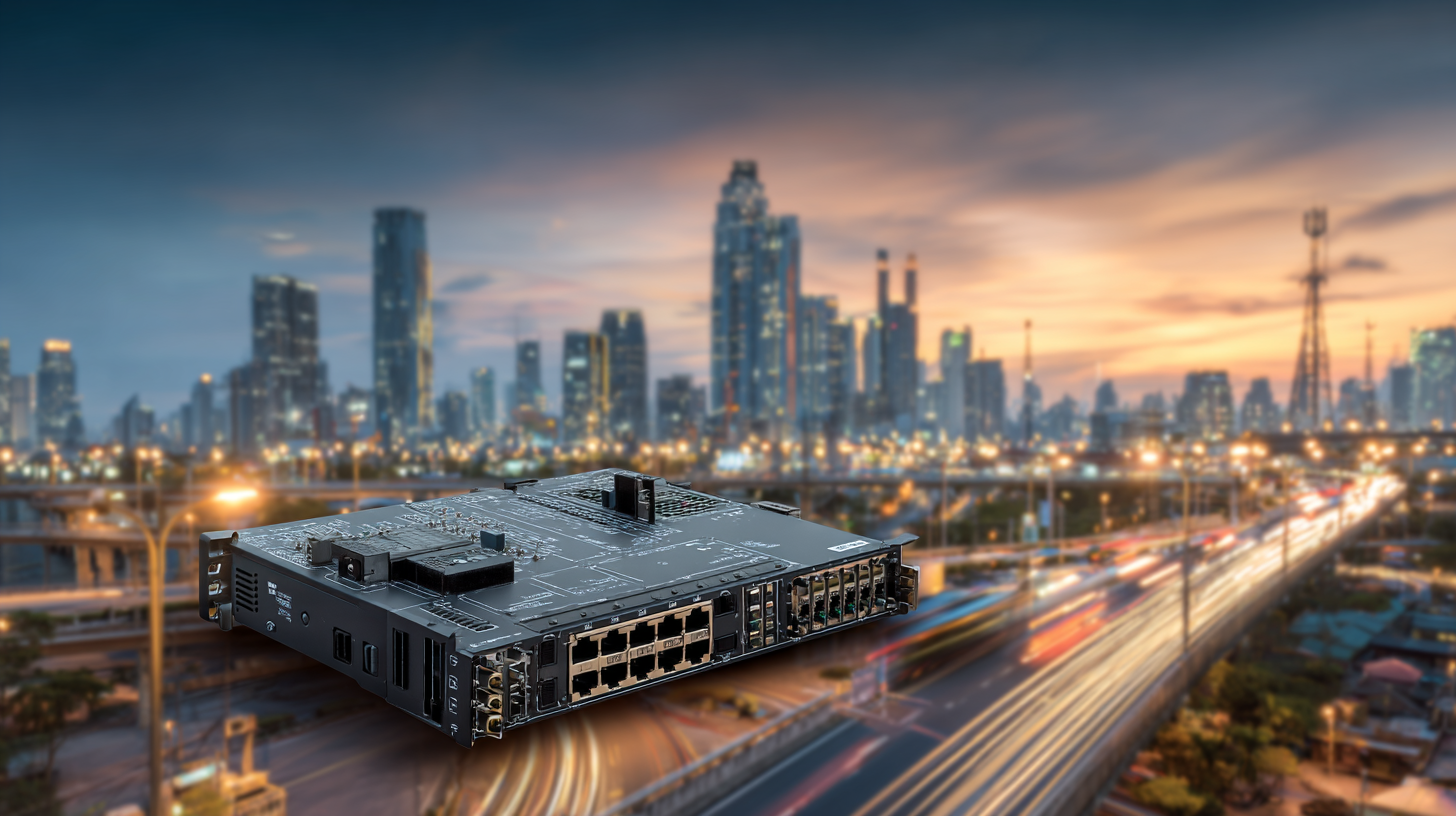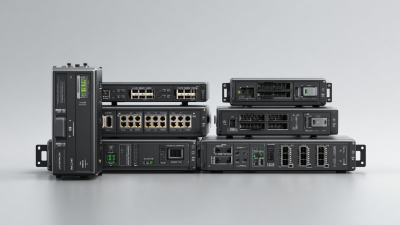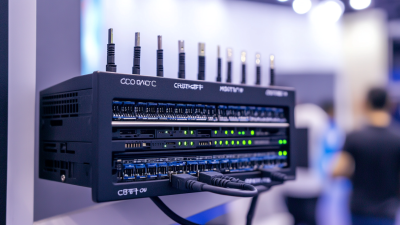
- hasivo@hasivo.com
- Mon - Sat at 7:00AM to 9:00PM
Leave Your Message

In today's fast-paced industrial environment, maintaining optimal network performance is crucial for ensuring efficient operations and seamless communication between devices. An Industrial Managed Switch plays a pivotal role in achieving this goal by providing advanced features that enhance network flexibility, security, and reliability. This guide will delve into various strategies to optimize your network performance using an Industrial Managed Switch, focusing on configuration settings, VLANs, Quality of Service (QoS), and monitoring tools. By implementing the best practices outlined here, you can significantly improve the responsiveness and stability of your network, minimizing downtime and maximizing productivity in your industrial applications. Whether you are managing a factory floor or a complex automated system, understanding how to leverage the capabilities of an Industrial Managed Switch is essential for navigating the challenges of the modern industrial landscape.

Industrial managed switches play a crucial role in optimizing network performance by providing robust features that cater to the demanding environments of industrial applications. Unlike unmanaged switches, managed switches offer enhanced control over network traffic, allowing for better bandwidth management and improved data flow. They enable network administrators to configure, manage, and monitor the network effectively, ensuring that the system operates efficiently under various conditions. This level of control is essential in scenarios where real-time data transmission is critical, such as in manufacturing or energy management systems.
Moreover, industrial managed switches often support advanced networking protocols and redundancy features that enhance reliability. With capabilities like VLAN tagging, Quality of Service (QoS), and link aggregation, these switches ensure that important data packets are prioritized and directed through the best possible paths. Implementing these features helps minimize downtime and increases overall network resilience, which is vital in industrial settings where any interruption can lead to significant losses. Ultimately, the strategic integration of industrial managed switches into network architecture is key to achieving optimal performance and robustness.
In industrial networks, optimizing performance is crucial for ensuring seamless operations. When evaluating performance metrics, three key factors come to the forefront: latency, throughput, and packet loss. Latency refers to the time it takes for data to travel from its source to its destination. High latency can result in delays that may impact real-time applications and processes. It’s essential to measure latency regularly and identify potential bottlenecks in your network.
Throughput, on the other hand, measures the amount of data transmitted successfully in a given time frame. To improve throughput, consider upgrading your network equipment or enhancing your cabling infrastructure to support higher data rates. Ensuring that your managed switch is configured correctly to prioritize traffic can also dramatically boost performance.
Packet loss is another crucial metric that signifies data not reaching its destination. This can lead to disruptions and degraded performance. Regularly monitoring packet loss can help identify issues in the network. Implementing Quality of Service (QoS) settings within your managed switch can prioritize critical data packets, reducing the likelihood of loss during heavy traffic periods.
**Tips:**
- Conduct periodic network performance assessments to pinpoint areas needing improvement.
- Utilize redundancy in network pathways to minimize potential points of failure and enhance reliability.
- Engage in continuous training for your team to stay updated on best practices in network management.
In industrial environments, the implementation of VLANs (Virtual Local Area Networks) is crucial for enhancing network segmentation and security. By creating isolated networks, VLANs help to reduce the attack surface, allowing sensitive devices and applications to operate securely without interference from less secure segments. This method is increasingly vital as industrial IoT (IIoT) expands, demanding robust security measures that traditional firewalls alone may no longer provide.

To maximize network performance and security, consider segmenting your industrial networks based on device function. By grouping devices with similar roles into specific VLANs, you can prevent unauthorized access and minimize the potential impact of a security breach. Additionally, ensure that each VLAN has appropriate access controls and monitoring in place to detect unusual activities promptly.
Another effective tip is to use VLAN tagging to maintain organization within your network. This practice not only eases management but also enhances performance by prioritizing traffic according to predefined rules, ensuring critical applications are not hindered by less important data flows. By following these practices, industrial managed switches can significantly bolster your network's security posture while keeping performance at optimal levels.
Configuring Quality of Service (QoS) is essential when optimizing network performance with an industrial managed switch. QoS ensures that critical network traffic receives prioritized bandwidth over less important data, thus enhancing the overall efficiency of industrial applications. According to a report by the International Data Corporation (IDC), organizations that implement QoS strategies can reduce latency in critical operations by up to 30%, significantly improving real-time communication in industrial settings.

One tip for effective QoS configuration is to identify and categorize your network traffic. Applications like VoIP, video conferencing, and real-time data processing typically require higher priority due to their sensitivity to delays. By creating specific QoS policies that distinguish between different traffic types, you can allocate appropriate resources to maintain optimal performance. Furthermore, utilizing features such as traffic shaping can help manage bandwidth, ensuring that no single application monopolizes the available network resources.
Another important consideration is to continuously monitor your network performance. Implement tools that provide visibility into traffic patterns and QoS effectiveness. A report by Cisco suggests that businesses employing continuous monitoring can enhance their QoS management by 40%, leading to quicker adjustments and better resource allocation. Regular assessments allow for fine-tuning of QoS settings, ultimately providing a more reliable and responsive network environment for critical industrial operations.
In industrial environments, maintaining optimal network performance is critical for seamless operations. One of the most effective ways to achieve this is through the implementation of Simple Network Management Protocol (SNMP) alongside diagnostic tools. SNMP allows for real-time monitoring of network devices, providing insights into their status and performance metrics. By effectively utilizing SNMP, network administrators can track various parameters, such as bandwidth usage and device health, enabling proactive management of any potential issues that may arise.
In addition to SNMP, diagnostic tools play a crucial role in identifying and troubleshooting network-related problems. These tools can perform in-depth analyses of traffic patterns, detect anomalies, and provide alerts for any performance degradations. By leveraging these capabilities, teams can swiftly respond to network disruptions, minimizing downtime and maintaining productivity. The combination of SNMP monitoring and diagnostic tools ensures that industrial managed switches operate efficiently, ultimately enhancing the overall network performance.





